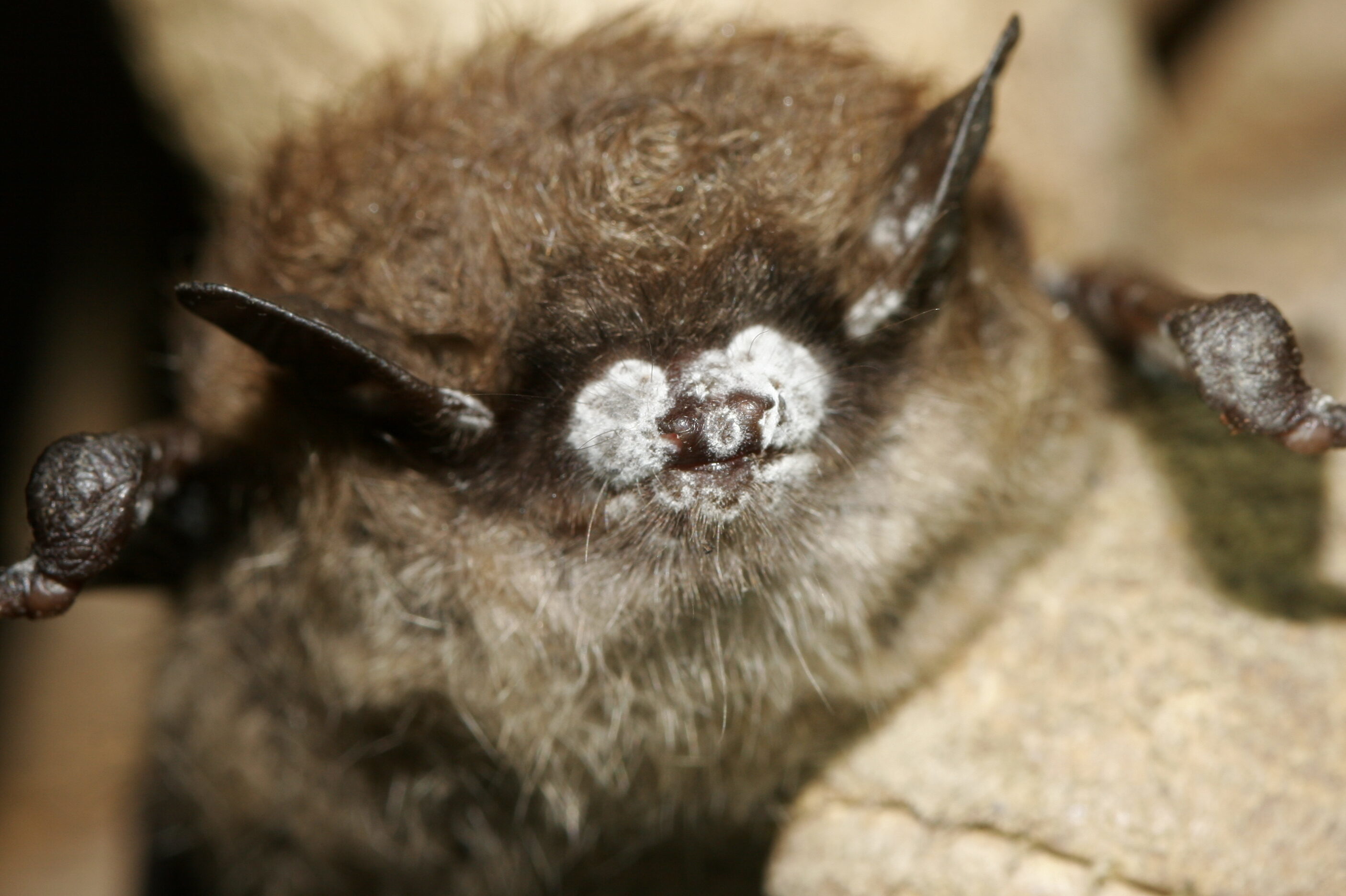
For the first time ever, a deadly disease caused by an invasive fungus has infected a Colorado bat.
An adult, female bat was found on the ground and unable to fly at Bent’s Old Fort National Historic Site in Otero County outside of La Junta, according to Colorado Parks and Wildlife. Tests conducted by the U.S. Geological Survey (USGS) National Wildlife Health Center later confirmed the bat was infected with white-nose syndrome. It’s a disease that has decimated bat colonies across the United States, CPW said.
The discovery was not unexpected — researchers have tested for the fungus that causes the disease periodically in the area.
“After the discovery of [Pseudogymnoascus destructans] last year, we expected this news was inevitable in a year or two, given the experience in other states as white-nose syndrome has spread westward,” said Tina Jackson, CPW Species Conservation Coordinator, in a news release. “We’ve been monitoring for the fungus for a number of years and this is the same pattern seen in other states.”
Last July, testing confirmed the presence of Pseudogymnoascus destructans in a bat at Bent’s Old Fort, but none of the 25 bats captured for the study showed signs of white-nose syndrome. The fungus was also found in Baca, Larimer and Routt counties last year.
Now, with the first Colorado infection confirmed, state wildlife officials are worried about the disease’s presence. CPW said any large-scale loss of bats would be devastating to local ecosystems and the economy.
“Of the 19 bat species native to Colorado, at least 13 may be susceptible to this disease,” CPW said in a statement. “These voracious insect eaters contribute $3 billion annually to the U.S. agricultural economy through pest control”.
Bats with white-nose syndrome often grow white fungus on their nose. In rare cases, the fungus also appears on wings and other body parts. Bats are commonly infected while hibernating. This causes them to wake up early, prematurely burning fat stores, which leads to starvation. The disease was first found in 2006, in a cave in New York. Since then, over a million bats have died from the disease, according to CPW.
While the disease is a serious threat to local bat populations, it is not known to infect humans or pets.
White-nose syndrome has no cure or treatment but scientists are searching for one. CPW said it will implement measures like further testing to prevent the disease from spreading. Residents and tourists should be mindful of accidentally spreading the fungus.
State and federal authorities recommend the following:
● Stay out of closed caves and mines.
● Decontaminate footwear and all cave gear before and after visiting or touring caves and other places where bats live.
● Do not touch bats. Report dead or sick ones to CPW by calling 303-291-7771 or email [email protected].
● Gear and clothing used in areas where Pseudogymnoascus destructans or white-nose syndrome occurs should not be used in areas where Pseudogymnoascus destructans is not known to occur. White-Nose Syndrome (whitenosesyndrome.org)
● To avoid accidentally transporting bats, check canopies, umbrellas and other outdoor items for any bats that may have roosted in a nook or cranny.









